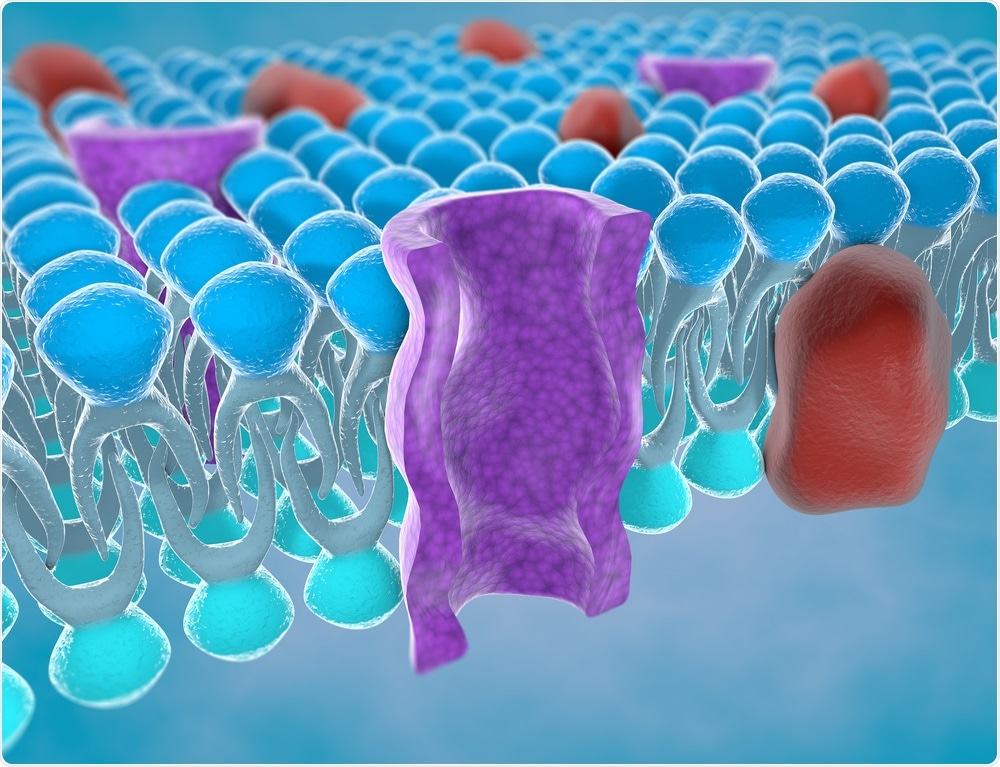Researchers from École Polytechnique Fédérale de Lausanne, Switzerland (EPFL) have mapped the molecular workings of potassium ion channels within the brain. The study titled, “A kinetic map of the homomeric voltage-gated potassium channel (Kv) family,” was published in the latest issue of the journal Frontiers in Cellular Neuroscience.
 Naeblys | Shutterstock
Naeblys | Shutterstock
Ion channels are tiny pores that are found on and within the cell membranes of various cells, including neurons and muscle cells. These channels are tightly regulated. The opening of ion channels is associated with the inflow or outflow of ions and the transmission of electrochemical charge. The activity of ion channels is responsible for voluntary and involuntary bodily functions, including thought and mood.
This is the first time that a team of researchers has been able to map out the whole network of voltage-gated ion channels (Kv) channels in the brain.
This study was part of the larger Blue Brain Project. The team has generously allowed their raw data to be freely available for research, with the hope that the data may be applied to drug discovery in the future. The scientists also hope that mapping the ion channels of the brain could help researchers working on whole brain simulation.
There have been numerous studies on Kv channels over the last few decades. These studies looked in detail at how the movements of ions across these gates is controlled by voltage.
Dr. Rajnish Ranjan, study leader and part of the Blue Brain Project was using information from these studies to develop a simulated digital brain for study and drug discovery. He said, “To my surprise, despite 30 years of research none of the raw data was available.”
He added that the results available were inconsistent and there was no way the results could be corroborated. Further very little was known about the Kv channels, especially at body temperature: “Near body temperature, fatty cell membranes soften and slip away from recording apparatus. So, virtually all studies were performed at room temperature.”
It is therefore imperative that scientists map and record Kv channel data at room temperature, so that it can be used for drug development in the future. Ranjan went on to explain the reasons behind this: “
Under standardized conditions and with large sample sizes, the behavior of Kv channels is largely consistent across cell lines and species. And as expected, quantitatively, Kv channels activate and inactivate faster at 35°C than at 25°C or 15°C. The big new finding was that Kv channels behave qualitatively very differently from 15°C, to 25°C to 35°C.”
Dr. Rajnish Ranjan
Dr. Rajnish RanjanFor the study, the team created an ion channel-recording robot. The function of this robot was to record the workings of the Kv channels automatically at body temperature, instead of room temperature.
The automated process significantly reduced the amount of time needed to sped up the process of recordings and also reduced the number of attempts. The machine helped researchers map the Kv channels and its behaviors across the brain. According to the scientists, the same methods could be used to study other types of channels in the future.
Ranjan explained that some of the channels are activated only at higher temperatures and thus these were assumed to be inactive earlier when studied at room temperature. He said that the discrepancies in the study findings could be because of this temperature difference and added that some of the channels have a different type of delayed activation or inactivation that further complicates matters adding that some of the channels may change their activation and inactivation at random.
The temperature-activity relationships established in our models allow recordings at any temperature to be converted to physiological temperature. This is a really key contribution of our work, since channel recordings at physiological temperature remain difficult and future experiments will likely continue to be performed at lower temperatures.”
Dr. Rajnish Ranjan
Ranjan and his team believes that these methods could now be used for studying the Kv channels and their modulators including protein signals, chaperones and anchors. These and the genetic variants of the channels need to be studied in detail the team explains.
Researchers working on the Blue Brain Project are now in the process of mapping other voltage-gated ion channels in the brain. This includes sodium ion channels and other positive ions. It is hoped that once the major ion channels are mapped, a digital simulation of the brain could be developed. This would accelerate drug development studies, the team explains.
Ranjan said in a statement, “The data and methods we have established to map the behavior of Kv channels can be used to systematically screen drug candidates for potentially positive or deleterious effects on channel behavior.”
The recordings of the Kv channels from over 9000 cells in the brain has been shared in an open-access platform called Channelpedia.
Ranjan said in a statement, “Anyone can access Channelpedia online and contribute. We encourage other labs to share their ion channel data to expand and refine this resource.”
Journal reference:
Ranjan, R., et al. (2019) A kinetic map of the homomeric voltage-gated potassium channel (Kv) family. Frontiers in Cellular Neuroscience. frontiersin.org/articles/10.3389/fncel.2019.00358/full.